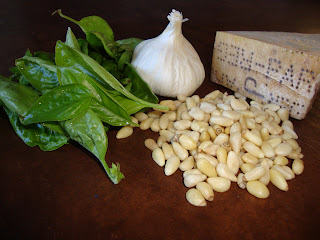A bad pun, I know! But that’s exactly how I felt when I pulled my first ever soufflé out of the oven, all golden, puffy and altogether irresistible.
Let me explain. I have long wanted to try my hand at soufflés, but have always been daunted by their notoriously difficult reputation. I mean, what if it sank to the bottom of the dish? Surely my heart would sink with it too. And what if it were totally inedible to boot? That would be a colossal waste of good ingredients. No cookbook I have seen to date has a recipe for a single serving of soufflé, which is a shame, because a) that would be the perfect size for a culinary experiment, since the quantities involved are small and b) if it’s just you, you don’t have to worry about having people ready and waiting at the table, holding their breath for the soufflé to come out of the oven, only to have it fall flat! And what’s more, none of the recipes I’ve seen so far have been amenable to scaling down either, since wrestling with fractions of eggs is not my forte.
I picked up Alice Waters’ The Art of Simple Food at the library the other day. This is a wonderful book for cooks of all skill levels, whether you are a beginner learning the basics or a more seasoned cook looking to expand your repertoire. The first part of the book has “lessons” covering everything from shopping and preparation to techniques and concepts. The second part is a selection of additional recipes for everything from salads and vegetables to desserts. The recipes are written in an organic narrative style instead of the usual format of ingredients followed by method. The ingredients are highlighted in bold, so you don’t miss anything important, and the step-by-step instructions ensure you’re doing things in the most sensible order. Overall, there’s a ton of stuff in there, simple recipes written simply, with enough variations to keep you busy for a long time. But I digress. While leafing through it, I came across a recipe for a Goat Cheese Soufflé, and surprisingly enough this one called for 4 eggs for 4 servings. Immediately, I knew I had to try it, scaled down to a single serving. As luck would have it, I even had a bit of goat cheese the exact size, so I took that as a sign and set to work.
The actual steps involved in making a soufflé are not too complicated. Making a béchamel is pretty basic, and whipping the egg whites is a snap when you have an electric whisk (otherwise it’s a lot of elbow grease!) The tricky part is whipping them to the correct stage, and then folding them in without deflating all that precious air that’s trapped inside. The air bubbles will begin to expand in the heat of the oven, lifting the soufflé to lofty heights. At the same time, the heat also coagulates the protein of the egg white, so that the soufflé has a structure to hold the air in. Even though I have a decent idea of the chemistry of the process, I don’t have a lot of experience working with egg whites, so I said a silent prayer before the final step of folding the egg whites into the cheese sauce. I vaguely remembered having seen a chef on TV use a paper collar around his ramekin to support the delicate mixture as it rises, so I tied a piece of parchment around mine for good measure and watched as the oven did its bit.
Recipe:
Goat cheese soufflé (Serves 1)
Adapted from Alice Waters’ The Art of Simple Food
1 tbsp olive oil (Butter is the traditional fat of choice)
¾ tbsp white whole wheat flour
¼ cup milk (I used 2%)
¼ cup milk (I used 2%)
1 egg, separated
1 oz soft goat cheese (a quarter of the small log usually seen in stores)
Salt, pepper and other seasonings to taste (such as herbs and spices of choice)
A drizzle of truffle oil (optional)
Preheat the oven to 375F (190C). Oil the inside of a 1-cup ramekin. You can also sprinkle the insides with grated parmesan or breadcrumbs. Place the ramekin on a baking sheet.
Heat the olive oil in a saucepan and whisk in the flour. Cook for a minute and then pour in the milk, whisking continuously. Cook till the sauce has thickened enough to coat the back of the spoon. Season with salt generously as the egg whites will have none, then add other seasonings to taste. I used freshly cracked black pepper and some red pepper flakes. Stir in the cheese and the egg yolk.
In a clean bowl, whip the egg white to moist firm peaks. Fold in a third of the whites into the cheese sauce, and then gently fold in the rest of the egg white, taking care not to deflate the batter. Pour into the prepared ramekin. Run a thumb around the inside edge of the ramekin, and then tie a paper collar around it to help the soufflé rise.
In a clean bowl, whip the egg white to moist firm peaks. Fold in a third of the whites into the cheese sauce, and then gently fold in the rest of the egg white, taking care not to deflate the batter. Pour into the prepared ramekin. Run a thumb around the inside edge of the ramekin, and then tie a paper collar around it to help the soufflé rise.
Bake in the oven until puffed and golden-brown, about 20 minutes. Towards the end of the cooking time, remove the paper collar to let the sides brown a bit. Eat immediately, with some truffle oil drizzled over the top if you like. A salad of mixed greens with a lemony vinaigrette is wonderful on the side.































